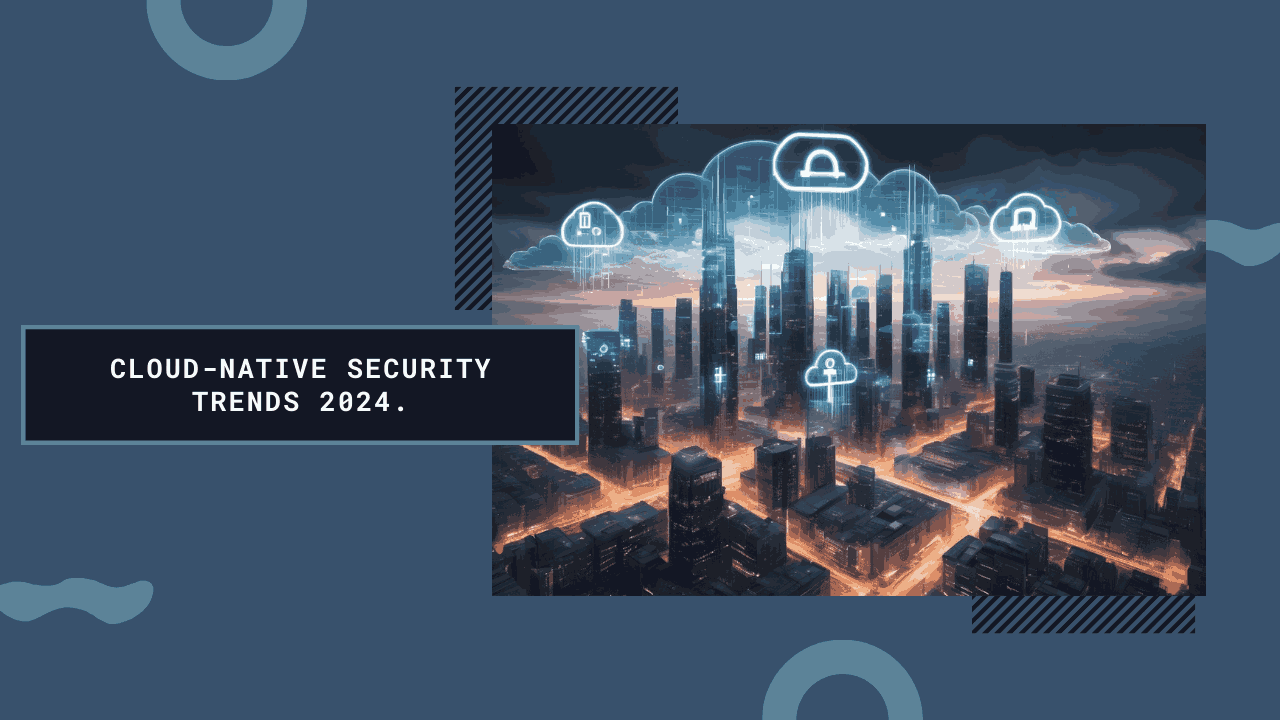Cloud-Native Security Trends You Must Know in 2024
Secure cloud-native environments with emerging trends, Zero Trust, DevSecOps, AI-driven security, and automated compliance solutions.

As organizations continue their migrations to the cloud, the associated security challenges present an increasingly complex landscape. This dynamic environment necessitates a proactive and informed approach to securing cloud-native assets. By acknowledging the key trends shaping this crucial aspect of IT infrastructure, organizations can ensure efficient and robust protection.
Zero Trust: A Paradigm Shift for Access Control
Traditional security models built on perimeter defenses struggle to effectively address the inherent fluidity of cloud environments. Zero Trust, a security framework based on continuous verification, is gaining significant traction in 2024. This methodology eliminates implicit trust, requiring continuous authentication for every user and device attempting access, regardless of location or perceived level of privilege. Gartner predicts a 61% increase in Zero Trust adoption within the year, highlighting its crucial role in securing modern cloud ecosystems.
DevSecOps
DevSecOps is the practice of integrating security into the DevOps process. It involves shifting security left in the development lifecycle, ensuring that security is built into applications from the ground up. With 70% of enterprise DevSecOps initiatives incorporating automated security vulnerability testing into their CI/CD pipelines by 2024, organizations are recognizing the importance of integrating security into their development processes.
Mitigating Supply Chain Risks: Vigilance is Key
The interconnected nature of cloud architectures introduces vulnerabilities within the broader supply chain. Malicious actors are increasingly exploiting these weaknesses, as evidenced by high-profile attacks like SolarWinds. In 2024, we anticipate:
- More sophisticated attacks: Hackers will develop increasingly complex methods to exploit supply chain vulnerabilities.
- Enhanced vendor risk management: Organizations will adopt more stringent processes to vet and monitor third-party vendors.
- The rise of Secure Access Service Edge (SASE): This cloud-based security architecture can bolster defenses against supply chain attacks by centralizing access control and threat detection.
Shared Responsibility: A Collaborative Approach
The shared responsibility model in cloud computing dictates that the cloud provider manages infrastructure security, while the organization remains responsible for its data and applications. This shared responsibility necessitates an active approach from both parties. Organizations must diligently:
- Embrace robust data encryption: Implementing encryption for data at rest and in transit is paramount to mitigate breaches.
- Enforce least privilege access: Granting users only the access they require minimizes the attack surface and potential damage.
- Thoroughly vet third-party applications: Only integrate trusted applications and continuously monitor their activity.
Navigating the AI Arms Race: Balancing Power and Ethics
Artificial intelligence (AI) presents a double-edged sword in the security realm. While it can automate threat detection and response, attackers are also harnessing AI to launch more targeted attacks. To navigate this complex landscape, organizations should:
- Prioritize explainable AI: Understanding how AI security solutions make decisions ensures they are not biased or exploitable.
- Foster human-AI collaboration: Leverage AI for automating tasks, but prioritize human oversight for critical decision-making and ethical considerations.
Sustainability and Security: A Synergistic Approach
Green cloud solutions, focused on energy efficiency and resource optimization, are gaining prominence as organizations address environmental concerns. This growing trend presents unexpected security benefits, as reducing unused resources minimizes the attack surface and potential vulnerabilities.
The Stakes are High:
- 60% of organizations reported experiencing a cloud security incident in the past year (IBM).
- The average cost of a data breach is a staggering $4.24 million (Ponemon Institute).
- Cybercrime costs the global economy a whopping $6 trillion annually (Accenture).
Conclusion: Embracing a Proactive Security Posture
Cloud-native security is not a static endpoint, but rather a dynamic journey requiring continuous adaptation and vigilance. By understanding the key trends outlined above and adopting a proactive security posture, organizations can effectively navigate the evolving landscape and ensure the long-term security of their cloud environments.

Explore how cloud-native architecture drives business growth through scalable microservices. Learn key principles for flexible, innovative digital solutions.

Boost your Magento 2 store performance with AWS cloud infrastructure. Discover how global data centers enable faster response times.